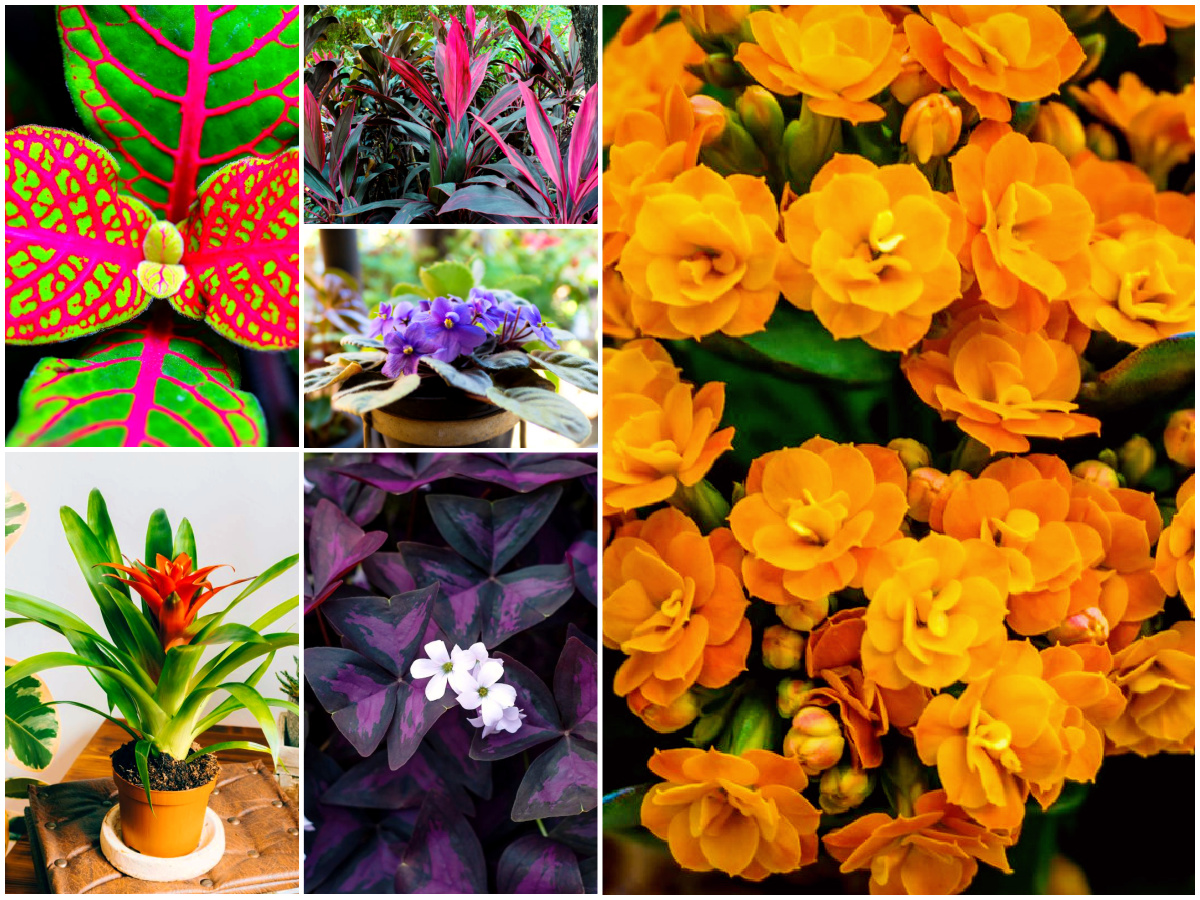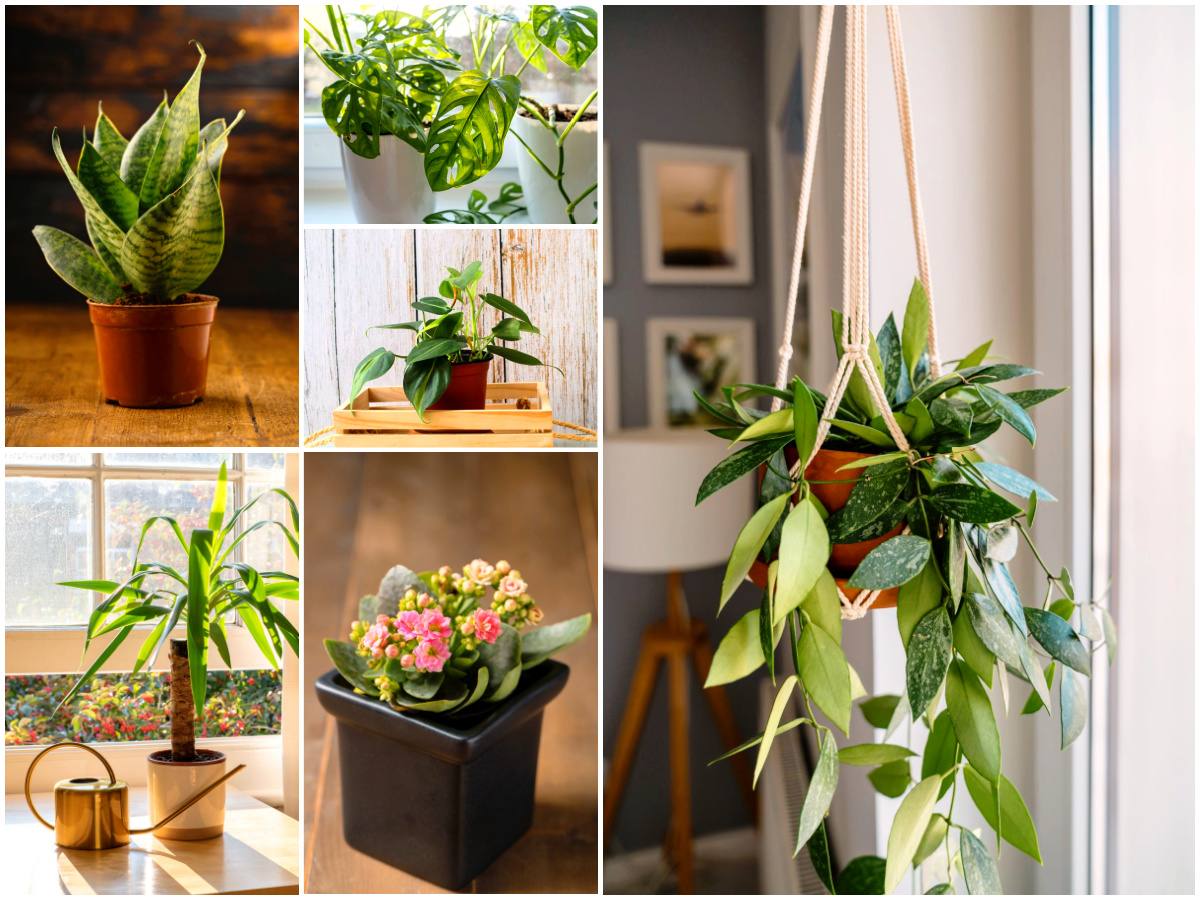With its lovely pink, red or white blooms that appear late Fall or early Winter, the gorgeous Christmas cactus (Schlumbergera) might tempt you to brighten up your home a little this holiday season.
Luckily, these succulents aren’t difficult to care for and with a little effort you can enjoy yours (and its flowers!) for years to come. If you got one this past December, you might be wondering how to care for Christmas cactus.
Keep reading to find out everything you need to know about how to care for Christmas cactus and growing this succulent in your own home.
| Name(s) (common, scientific) | Christmas cactus, Thanksgiving cactus, holiday cactus, crab cactus, genus Schlumbergera |
| Difficulty level | Easy |
| Recommended lighting | Indirect |
| Water | Keep slightly moist |
| Soil type | Peat-replacement based |
Christmas cactus care
Unlike many of the other cactus species we keep as houseplants, Christmas cacti are not naturally found in dry desert habitats. They are forest cacti originating from Brazil, where they grow on trees and rocks instead of in the ground.
Their humid jungle habitat gives us some good care indications. For example, these cacti need more water and humidity than their desert cousins. On the other hand, they don’t like direct sunlight, as this is naturally blocked out by taller trees.
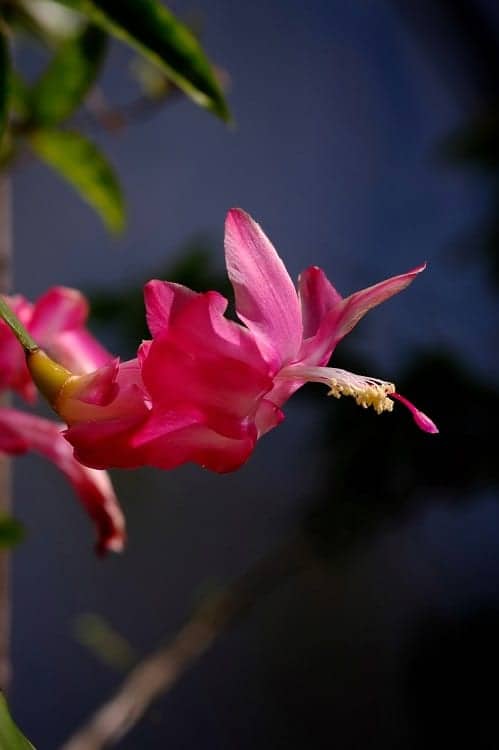
Christmas cactus light & temperature
In order to succesfully grow Christmas cacti, it’s a good idea to keep their natural habitat in mind.
Light
Bright indirect light is preferred for your Christmas cactus. Direct sunlight is a bad idea for the most part (though some early morning, late afternoon or Winter sun shouldn’t be too much of an issue).
Like other succulents, a Christmas cactus exposed to too much light will turn a pinkish red. This isn’t too much of an issue, but it can be an indication you might want to move it to a more shaded spot.
Christmas cactus bloom is triggered by changes in light and temperature. Once the days get shorter, buds will start to form, so make sure the plant is not exposed to (artificial) light in the evenings/nights during the blooming period.
Temperature
Room temperature is just fine for Christmas cacti, though they can also withstand much lower and higher temps; just try to avoid anything below 50 °F/10 °C.
Slightly lower temperatures are one factor that triggers bud formation in Christmas cacti, although it doesn’t seem to be an absolute must for flowers.
Keep in mind that these cacti don’t like to be moved around during the blooming period. They might drop their buds or flowers when disturbed too much!
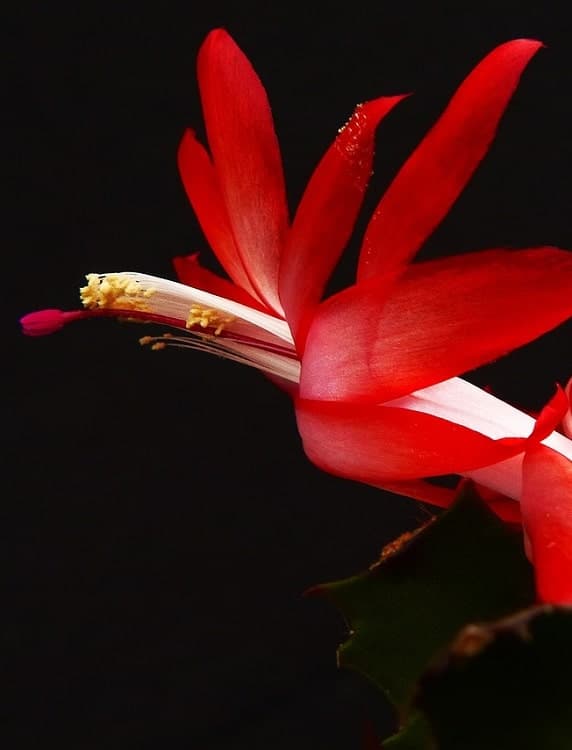
Christmas cactus soil & planting
Christmas cacti are quite undemanding when it comes to soil, though the ideal mixture is said to be a bit acidic. Many use peat for this, though there is still a lot of discussion about peat sustainability.
The peat element holds water, while some added perlite helps ensure proper drainage.
A relatively wide planter with a drainage hole is preferable. Christmas cacti don’t have to be repotted often and should still flower just fine even when root-bound, as long as the soil is refreshed every few years.
If you do choose to repot, go one pot size up at a time.
Watering Christmas cactus
Although they are succulents that can store water in their leaves for dry periods, Christmas cacti don’t respond well to being left to dry too often or too long, nor do they appreciate very dry air.
Because they naturally grow in relatively moist areas, they require a different watering schedule than their desert cousins. The species likes to be kept moist (though never wet) from the start of the growing season in early Spring until the end of the blooming period when all the flowers have dropped.
As with most other houseplants, when no growing or blooming is going on, less moisture is needed. Reduce waterings and let the soil dry out a bit more during this winter period.
Although natural Christmas cactus habitat is quite humid, normal home humidity levels should be fine for this plant unless the air is very dry. A humidity tray or some extra misting are probably appreciated, though not necessary in most cases.

Christmas cactus fertilizer
Which type of fertilizer works best for Christmas cacti is not entirely clear. Some sources recommend using a balanced, regular houseplant fertilizer while others mention a fertilizer with higher potassium content works better.
Regardless of what you end up going for, you can fertilize with a diluted solution around once a month during the growing season. Stop fertilizing between early Fall and early Spring.
How to get a Christmas cactus to bloom
If you’re wondering how to make a Christmas cactus bloom, don’t worry. It’s entirely possible and not that hard as long as you understand the changes these cacti go through when winter comes around in their natural habitat.
- Winter means shorter days, although in our homes the lights will often be on during the evening which can confuse your Christmas cactus. You might want to put it in a spot where nighttime is actually dark, preferably 12 hours of uninterrupted darkness.
- Winter also means lower temperatures, although it never really gets too chilly in the plant’s jungle habitat. Something between 10-15 °C (50-59 °F) should be fine. If you have a shed or garage, you could place the plant in there.
- You should reduce the amount of water your Christmas cactus receives. As mentioned in the section on watering, it’s a good idea to switch from keeping the soil lightly moist at all times to letting the top layer dry out before watering again. This encourages dormancy.
- You can move your Christmas cactus back to its usual spot once you see some good bud formation. In a few weeks you should be able to enjoy those gorgeous colorful flowers!
Now, you might be thinking that all the previous is a lot of work just for some flowers. Do you really need to go through all that to get your Christmas cactus to bloom?
Actually, there is a decent chance you’ll see some flowers pop up during wintertime even if you don’t follow the darkness + lower temperatures + reduced watering rules to the letter. It’s just that the display will be a whole lot more spectacular if you do make the effort!
Christmas cactus vs Thanksgiving cactus
There is quite a bit of confusion out there about Christmas cactus taxonomy. The “true” Christmas cactus is Schlumbergera x buckleyi, a hybrid species with slightly rounded leaf points. Schlumbergera truncata has pointier leaves and blooms a little earlier. This species is sold as both “Christmas cactus” and “Thanksgiving cactus”. If you buy a plant labeled as Christmas cactus, it is usually actually Schlumbergera truncata.
If you’re unsure whether you own a “true” or “false” Christmas cactus, just have a look at the leaves. Their care is the same, so don’t worry too much about taxonomy. If it has segmented leaves and pretty flowers we love it no matter what!
Lastly, there is also the Easter cactus, which is another segmented succulent that looks pretty similar to the aforementioned two. Its leaf shape is more rounded, though, and the flowers are star-shaped rather than elongated. It used to belong to the genus Hatiora, but has now also been placed in Schlumbergera
Buying Christmas cactus
Christmas cacti can be found in most garden centers and plant stores during the holiday season and might also be sold in supermarkets and other shops. Keep in mind that the stress of transport might unfortunately cause them to lose their lovely flowers.
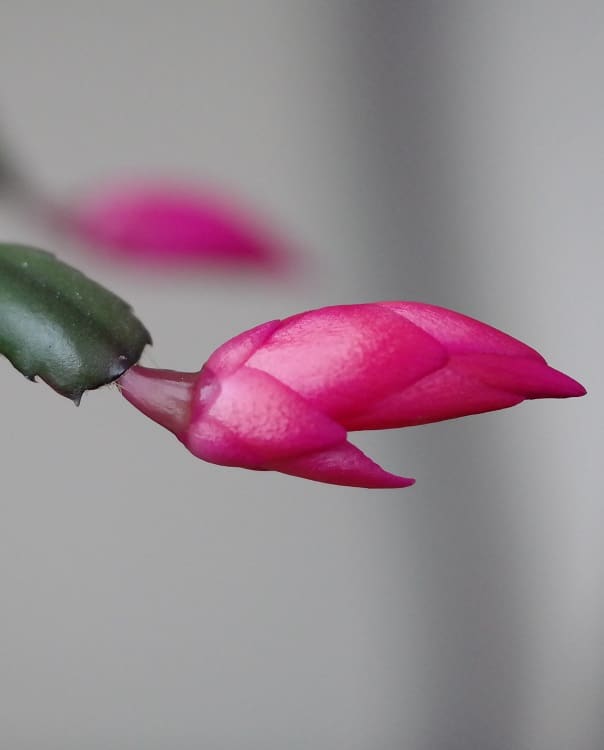
Propagating Christmas cactus
Propagating a Christmas cactus is not a difficult task and can be done by taking cuttings. Just twist off a segment containing a few leaves, let it dry for a few days and stick it into a new pot (or the old pot if your aim is to give your plant a “fuller” look). It should root and start producing new growth within a few weeks.
If you’d like to know more about how to propagate Christmas cactus, have a look at the Christmas cactus propagation guide to figure out the best way to multiply yours!
Is Christmas cactus toxic to cats and dogs?
Christmas cacti (Schlumbergera) are not toxic to cats or dogs. Yay!
Cover photo: Christmas Cactus in bloom by B.D.’s world

